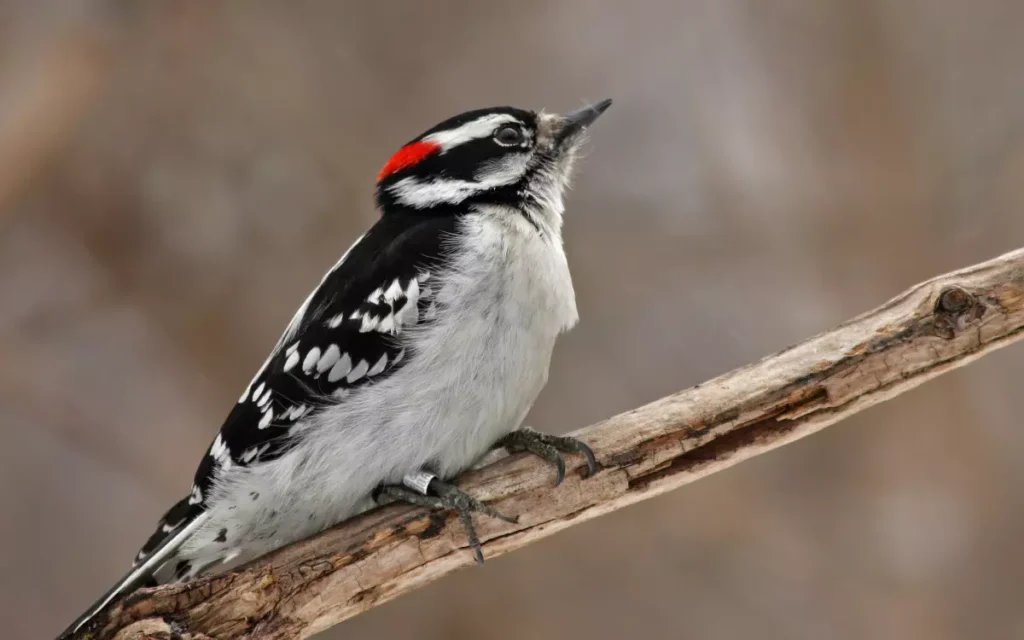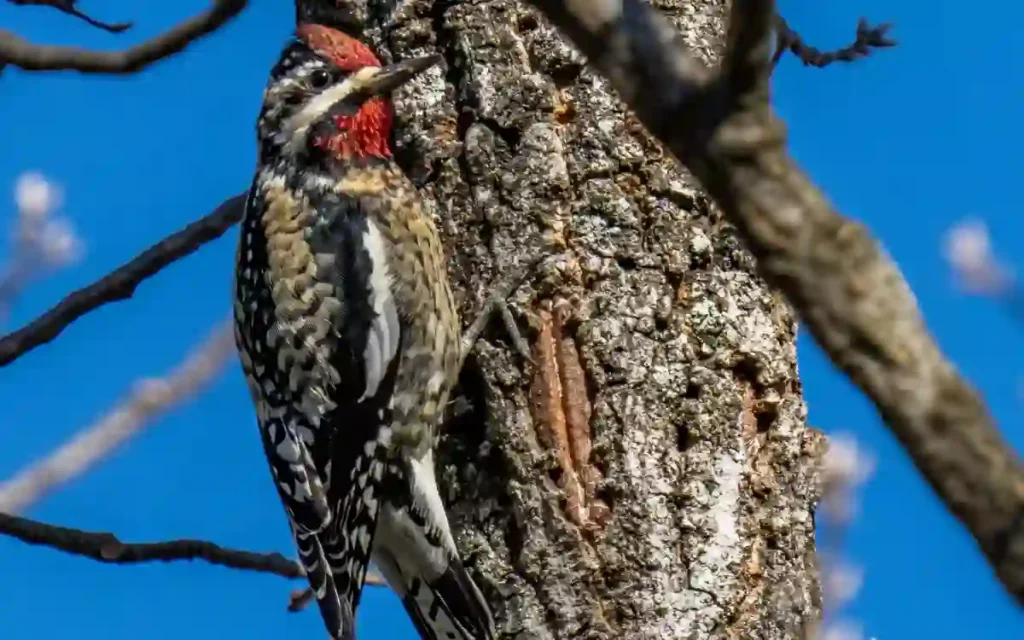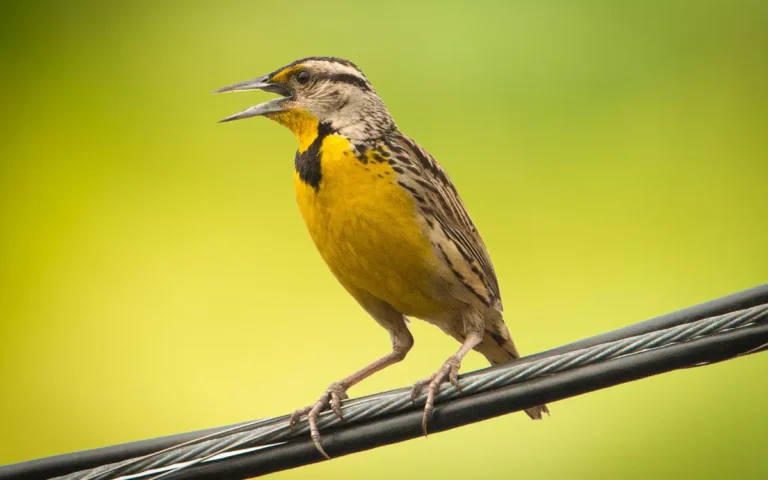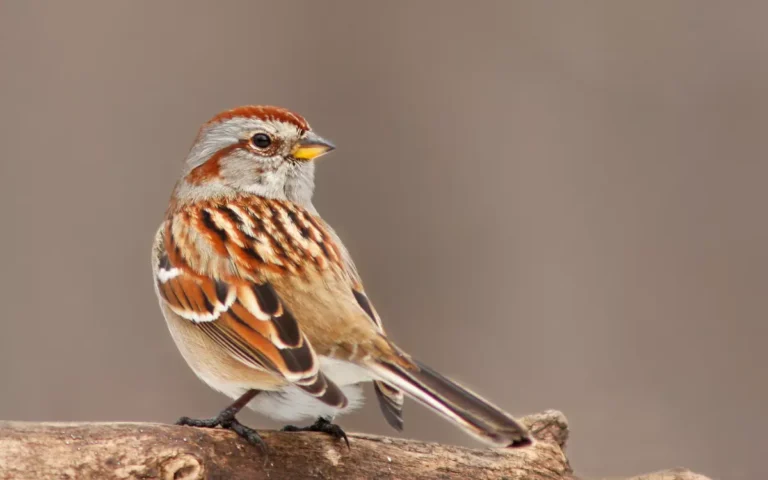8 Woodpeckers of South Carolina (Photo,info)

Woodpeckers of South Carolina are diverse, intriguing birds, key to maintaining healthy forests and ecosystems in the state.
In South Carolina, many kinds of woodpeckers live. These birds are important for the forests. They help by eating insects and spreading seeds. There are many different types of woodpeckers here, like the bright Red-headed Woodpecker and the big Pileated Woodpecker.
Overview of Woodpecker Species in South Carolina :
South Carolina is home to several woodpecker types. Each one is special and helps the environment in its own way. Let’s learn about some of them:
1.Red-bellied Woodpecker (Melanerpes carolinus) :

The Red-bellied Woodpecker is easy to spot with its bright red head and black and white wings. Despite its name, its belly isn’t very red.
This bird lives in woods and even near houses. It’s known for its loud “cha-cha-cha” call and strong pecking on trees.
The Red-bellied Woodpecker eats insects, fruits, and seeds, often visiting bird feeders for suet. It’s a friendly bird, seen in many parts of South Carolina, making a unique sound that’s easy to recognize.
- Length: 22.9 to 26.7 cm (9.00 to 10.51 in)
- Weight: 56 to 91 g (2.0 to 3.2 oz)
- Wingspan: 38 to 46 cm (15 to 18 in)
2.Hairy Woodpecker (Leuconotopicus villosus) :

The Hairy Woodpecker is a black and white bird that looks a bit fluffy. It’s about the size of a robin. You can find it in woods, parks, and even backyards.
This woodpecker loves to peck on tree trunks and branches, looking for insects. It eats bugs, seeds, and sometimes tree sap. You can hear it making a short “peek” sound.
The Hairy Woodpecker is a quiet bird but you can hear it drumming on trees with its beak. It’s a common bird in South Carolina and easy to spot because of its black and white feathers.
- Length: 18-26 cm (7.1-10.2 in)
- Weight: 40-95 g (1.4-3.4 oz)
- Wingspan: 33-41 cm (13.0-16.1 in)
3.Downy Woodpecker (Picoides pubescens) :

The Downy Woodpecker is small and cute, with black and white feathers. It’s the smallest woodpecker in South Carolina. You can see them in trees, parks, and sometimes near homes.
They’re busy birds, always pecking at tree bark to find insects. Their diet includes bugs, seeds, and berries. They make a gentle “pik” sound and a soft drumming noise on trees.
The Downy Woodpecker is friendly and often visits bird feeders. Look for a little bird with a black and white pattern and a tiny red spot on its head – that’s the Downy Woodpecker!
- Length: 14-18 cm (5.5-7.1 in)
- Weight:20-33 g (0.71-1.16 oz)
- Wingspan:25-31 cm (9.8-12.2 in)
Read also:
4.Red-headed Woodpecker (Melanerpes erythrocephalus) :

The Red-headed Woodpecker is striking with its bright red head and contrasting black and white body. It lives in open woods and parks in South Carolina.
This woodpecker is unique because it catches insects in the air, not just on trees. It also eats nuts and fruits.
The Red-headed Woodpecker makes a loud “tchur-tchur” sound and is known for its strong pecking on trees. You can easily spot this beautiful bird by its bold red head, a sight that’s hard to miss in the forest!
- Length: 19-23 cm (7.5-9.1 in)
- Weight: 56-91 g (2.0-3.2 oz)
- Wingspan: 42 cm (16.5 in)
5.Northern Flicker (Colaptes auratus) :

The Northern Flicker is unique with a brown body, black spots, a black crescent on its chest, and a red patch on the nape.
In South Carolina, you can find them in woods, fields, and even yards. Unlike other woodpeckers, Northern Flickers prefer to find insects on the ground, especially ants.
They do eat fruits and seeds too. Their sound is a loud “wick-wick-wick,” and they also make a rhythmic drumming. Northern Flickers are large, colorful, and easy to recognize, with their spotted feathers and distinctive sounds making them a special sight in the state.
- Length: 28-36 cm (11-14 in)
- Weight: 86-167 g (3-5.88 oz)
- Wingspan:42-54 cm (16.5-21.25 in)
6.Pileated Woodpecker (Dryocopus pileatus) :

The Pileated Woodpecker is the largest woodpecker in South Carolina, almost crow-sized. It’s mostly black with white stripes on the face and a flaming-red crest.
These birds live in big forests, especially where there are lots of dead trees. They love to eat carpenter ants, but they also eat fruits and nuts.
The Pileated Woodpecker is known for its loud, deep drumming on trees and a high-pitched “kuk-kuk-kuk” call. You can spot these impressive birds by their large size, striking red crest, and the big, rectangular holes they peck in trees.
- Length: 15.8-19.3 in (40-49 cm)
- Weight: 8.8-12.3 oz (250-350 g)
- Wingspan: 26.0-29.5 in (66-75 cm)
7.Yellow-bellied Sapsucker (Sphyrapicus varius) :

The Yellow-bellied Sapsucker is known for its distinctive black and white feathers and yellow belly. These woodpeckers live in forests and woodlands. They’re unique because they make small holes in trees to drink sap and catch insects attracted to it.
Their diet includes tree sap, fruits, and insects. They make a “mewing” call and a rhythmic drumming sound on trees. A special thing about Yellow-bellied Sapsuckers is their role in creating sap wells that other animals also use for food.
They are fascinating birds, easily spotted by their yellow bellies and the patterns of holes they leave in trees.
- Length: 7.1-8.7 in (18-22 cm)
- Weight: 1.5-1.9 oz (43-55 g)
- Wingspan: 13.4-15.8 in (34-40 cm)
Read also: 6 Species Hawks of South Carolina to explore
8.Red cockaded Woodpecker

The Red-cockaded Woodpecker is not actually red. It’s mostly black and white with a small red streak near the male’s cheek. They live in pine forests, especially in old trees.
These woodpeckers are special because they make holes in live pine trees for their homes. They eat insects, mainly found in tree bark. Their sounds include soft “churr” calls and gentle drumming.
One unique thing about the Red-cockaded Woodpecker is that it’s an endangered species, making it a very important bird for conservation efforts in South Carolina and other states. They play a key role in their forest habitats.
- Length: 7.9-9.1 in (20-23 cm)
- Weight: 1.5-1.8 oz (42-52 g)
- Wingspan:14.2 in (36 cm)
Habitats and Adaptations
Woodpeckers in South Carolina live in many places. They like big forests and places near houses. They have strong beaks for pecking wood to find bugs. They also have strong necks to help them peck hard without getting hurt. Their feet are special for climbing trees. They can hold onto tree trunks tightly. This helps them live in different places and find food. They are important for the trees and nature.
Diet and Feeding Habits
Woodpeckers in South Carolina eat different things. They mostly like insects, fruits, nuts, and tree sap. Each kind of woodpecker eats in its own way. Some peck at trees to get bugs.
Others, like the Yellow-bellied Sapsucker, drink sap and catch insects that come to the sap. Woodpeckers help nature a lot.
They eat many insects, which helps control the number of bugs in the forest. This is good for the trees. They also spread seeds from the fruits they eat. This helps new plants grow. Woodpeckers are important for keeping the forest healthy and full of life.
Behavior and Communication
Woodpeckers have interesting behaviors. They are famous for drumming on trees. This is not just for finding food but also for talking to other woodpeckers. They drum to say “This is my area” or to find a mate.
They also make nests by pecking holes in trees. This is where they live and raise their babies. Woodpeckers make different sounds, like calls and chirps.
These sounds are their way of talking. They use them to talk to each other and warn about danger. Their drumming and calls are important for living in the forest and talking to other woodpeckers.
Conservation Status and Challenges
Some woodpeckers, like the Red-cockaded Woodpecker, are in danger. They are called endangered species. This means there are not many left.
The biggest problem for them is losing their homes. When trees are cut down or forests change, woodpeckers lose places to live and find food. Changes in where they can find food also hurt them. People are trying to help these birds.
They are protecting forests and making new homes for woodpeckers. It’s important to look after these birds because they help the forest stay healthy. We need to take care of their homes and make sure they have enough food.
Observing Woodpeckers in South Carolina
To see woodpeckers in South Carolina, you have to know where to look and what to do. These birds love forests, parks, and wooded areas. Early morning is the best time to see them.
Look for them on tree trunks and listen for their pecking. To attract woodpeckers to your backyard, use bird feeders with suet and sunflower seeds. Leaving a dead tree standing can also attract them, as they use it for food and homes.
Remember to watch quietly from a distance. While looking for woodpeckers, you might even spot a south carolina hawk. Enjoy watching these amazing birds but do it in a way that keeps them safe and happy.
FAQS:
Q: What are the most common woodpecker species in South Carolina?
A: The most common species include the Red-bellied Woodpecker, Downy Woodpecker, and the Pileated Woodpecker.
Q: What is the most common woodpecker in South Carolina?
A: The most common woodpecker in South Carolina is the Red-bellied Woodpecker. It’s easily recognizable by its red cap and black and white patterned back.
Q: Do woodpeckers migrate from South Carolina?
A: Most woodpecker species in South Carolina are year-round residents and do not migrate. They can be found in the state throughout the year, including species like the Red-bellied and Downy Woodpeckers.
Q: What kind of bird was woodpecker?
A: Woodpeckers are a type of bird known for their unique ability to peck at wood. They belong to the family Picidae, which is known for species that peck into trees to find food, create nesting cavities, and communicate. Woodpeckers are known for their strong beaks and shock-absorbing heads, which help them peck without injury.
Q: Where is the best place to see woodpeckers in South Carolina?
A: Woodpeckers can be found in forests, parks, and even suburban areas. National parks and nature reserves are great places to start.
Q: How can I attract woodpeckers to my backyard?
A: You can attract woodpeckers by setting up bird feeders with suet or sunflower seeds and leaving dead trees or branches for them to explore.
Q: What time of day are woodpeckers most active?
A: Woodpeckers are most active during the early morning hours.
Q: Can woodpeckers cause damage to trees or property?
A: While woodpeckers can cause damage to trees and wooden structures, it’s important to remember they are protected under law and play a crucial role in the ecosystem.
Q: How can I observe woodpeckers without disturbing them?
A : Keep a respectful distance and use binoculars for a closer look. Avoid making loud noises that could startle them.
Q: Why do woodpeckers peck on trees?
A: Woodpeckers peck on trees to find food, create nesting sites, and communicate with other woodpeckers.
Conclusion:
South Carolina, woodpeckers are special birds, adding beauty and balance to nature. With various species, from the Red-bellied to the Pileated, they play a key role in the ecosystem. Remember to watch and appreciate them responsibly.






